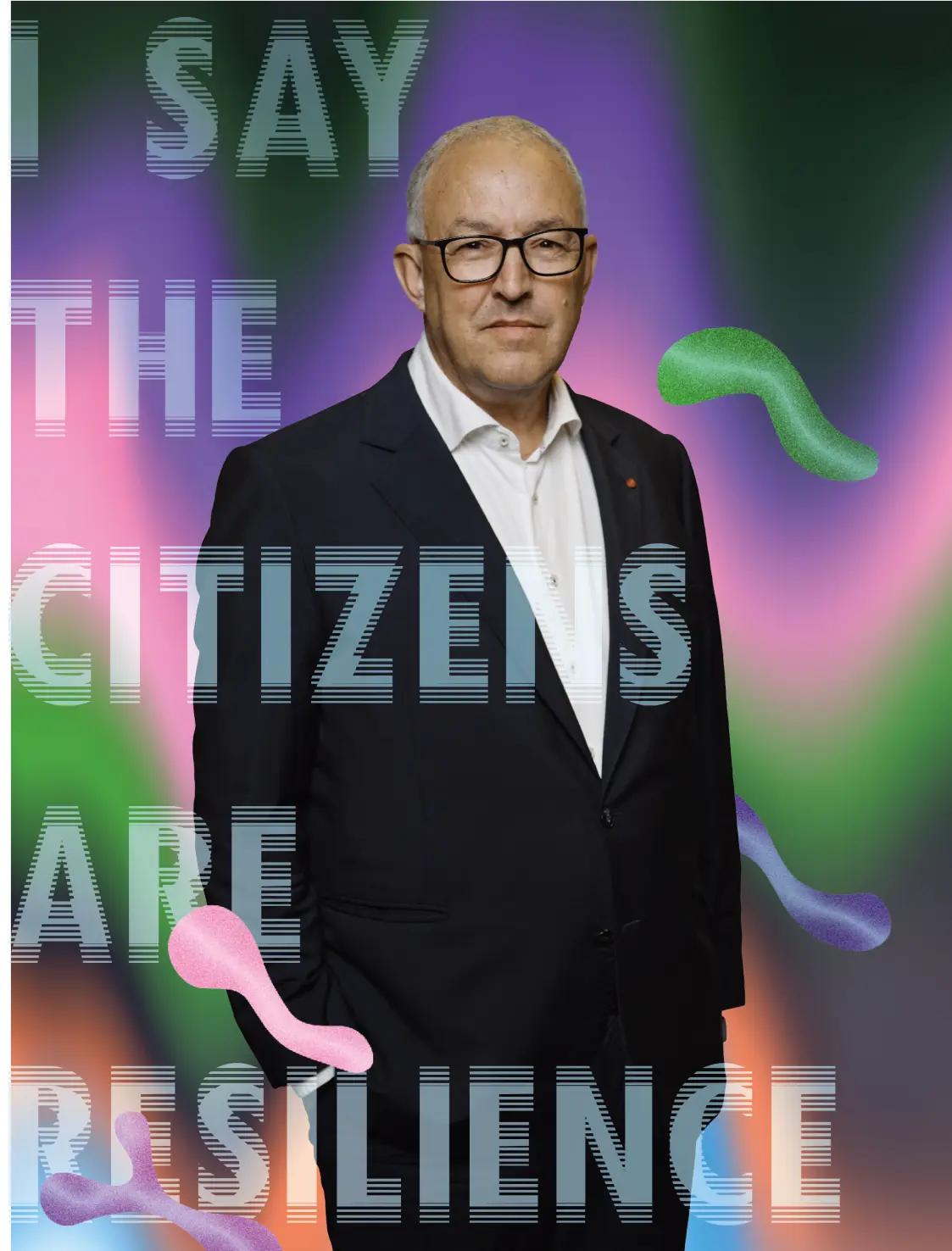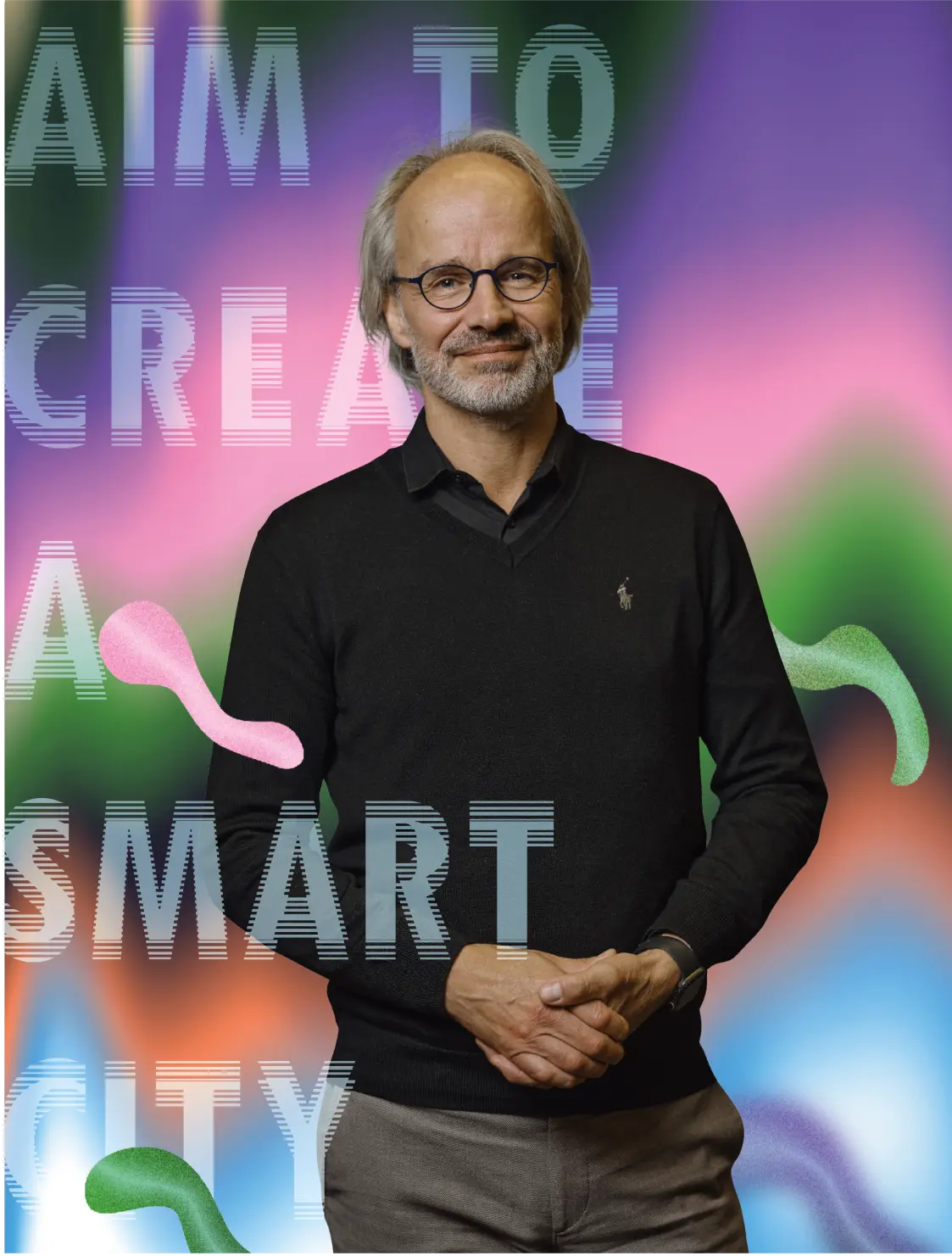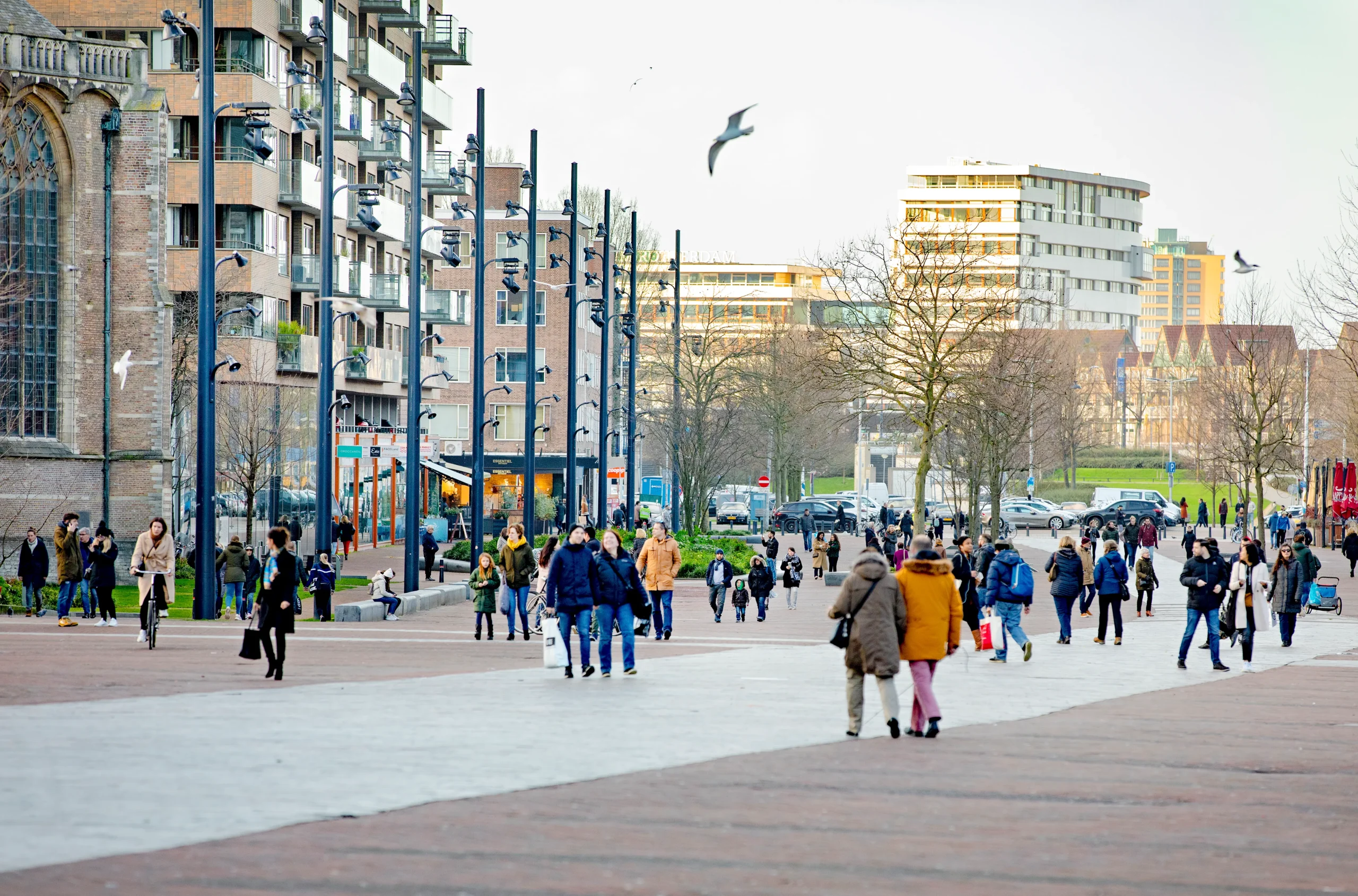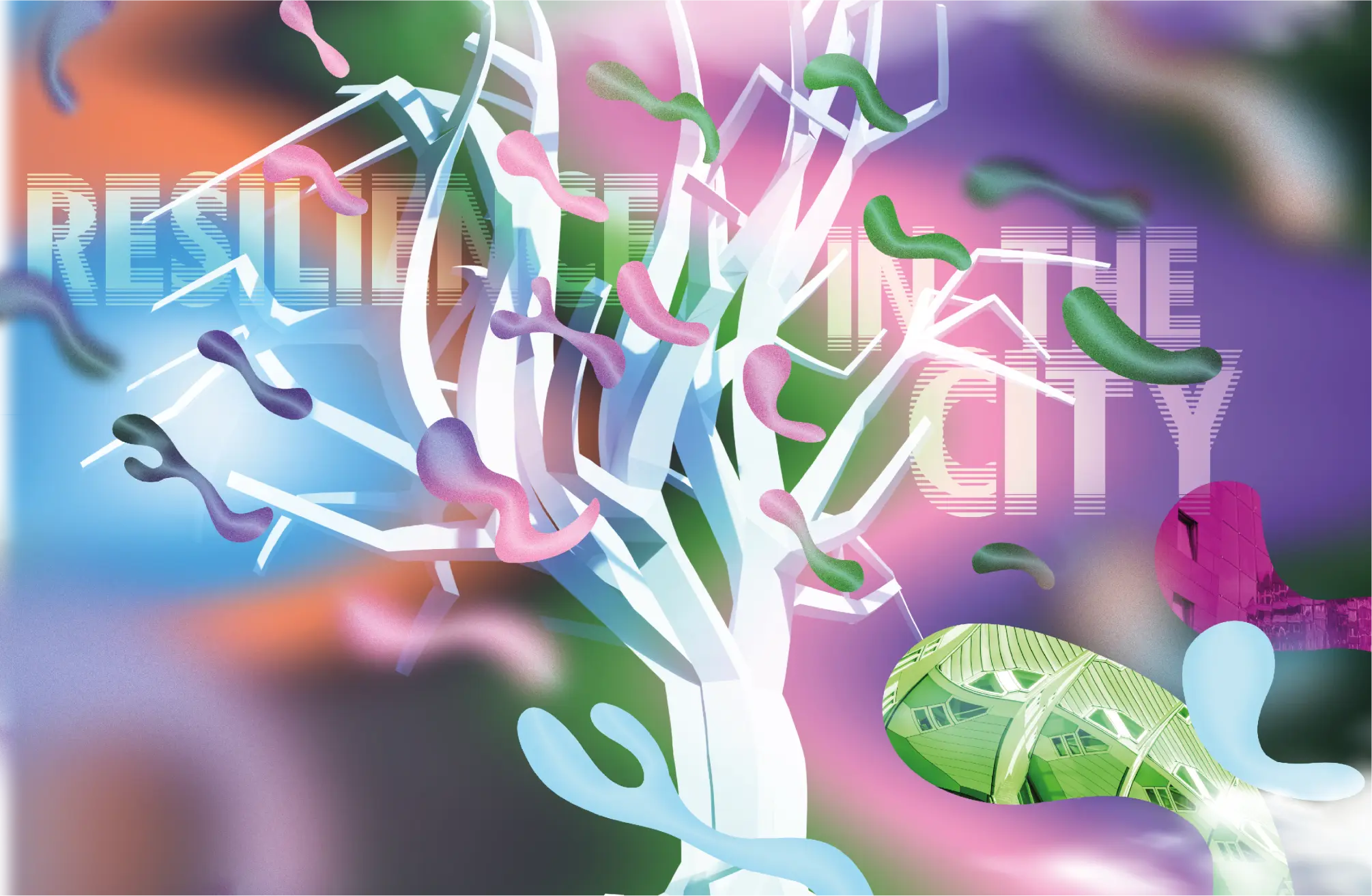Text Jos Wassink
We’re going to talk about resilience, which is a future-oriented topic. Do you still have time for that with all the night-time explosions and shootings, such as those that recently took place in Delfshaven and the Erasmus MC?
Aboutaleb: “Certainly. I have to switch between different scales. There’s the microscale, where you have to micro-manage. A demonstration, a shooting, elements like that. But you also have to make time to think about the long term. One such topic is the energy supply of the Netherlands and Germany, in which the port of Rotterdam plays an important role. So I am currently trying to make lots of friends all over the world. Countries that were very much unknown in the field of energy are now emerging as future hydrogen suppliers. Examples are Saudi Arabia, Egypt, Morocco, Namibia, South Africa, Chile, Argentina.”
Going back to the concept of resilience. Can you define it and explain why it is important?
Aboutaleb: I have a quite simple definition of resilience. Resilience has to do with how much strain you can put on an elastic band, how much you can stretch it apart. When you stretch it, you put a lot of strain on it. But when you release it, it returns to its original shape. To me, resilience represents restorative strength. But if you pull too hard on the elastic band, it won’t return to its former shape. It will be permanently damaged. That is the best imagery to think about a society’s resilience. I think restorative strength is an even better term.”

© Portrait: Marcel Krijger | Illustration/Montage: Ontwerpwerk
Who is Ahmed Aboutaleb
Born in Nador, Morocco in 1961, Ahmed Aboutaleb came to the Netherlands in 1976. He studied telecommunications at an institute of technology, but then went to work as a reporter for various media outlets. His directorship at Forum, a research institute for multicultural issues, and a job as a civil servant with the City of Amsterdam led Aboutaleb towards public administration. He joined the Dutch Labour Party (PvdA) in 2003. A year later, he replaced the discredited Rob Oudkerk as alderman responsible for education in Amsterdam. In 2007, he was appointed State Secretary for Social Affairs under Prime Minister Balkenende. Two years later, he succeeded Ivo Opstelten as Mayor of Rotterdam. He is also chairman of the Batavian Society for Experimental Philosophy and supports the Convergence partnership between TU Delft, Erasmus University and Erasmus Medical Center.
Who is Arjan van Timmeren
Arjan van Timmeren (Groningen, 1969) has been Professor of Environmental Technology and Design in the Faculty of Architecture and the Built Environment since 2012. He also studied and obtained his doctorate cum laude there. A major theme in his research involves the use of technology to make buildings and cities more sustainable. He was closely involved in the establishment of the Amsterdam Institute for Advanced Metropolitan Solutions (AMS) helming it as scientific director between 2015 and 2022. Since 2021, he has been the director of research of the Resilient Delta Initiative, an interdisciplinary research programme that collaborates with representatives of employers and employees to develop resilient solutions in and for the Rotterdam living lab. Van Timmeren’s aim is to create ‘a smart city,’ which he says is both an urgent necessity and a scientific challenge. “The big cities of the 21st century will be intelligent, or feel the full impact of climate change,” he said about this previously.

© Portrait: Marcel Krijger | Illustration/Montage: Ontwerpwerk
Where do you stand on that, Professor van Timmeren?
Van Timmeren: “I would agree with that definition, but I would also like to add learning ability to it. An elastic band doesn’t have that, but a society can learn or develop a restorative capacity to deal with changes.”
Aboutaleb: “Not just dealing with change, but also dealing with unexpected and unimaginable external calamities. The Americans talk about shocks and stresses. These are events that happen suddenly, putting a strain on society and potentially causing a great deal of misery. The question then is: can society recover from it and return to its original form?”
What time scale is associated with this resilience of society?
Aboutaleb: “That depends on the extent of the damage done, and how wide the gap is. How many groups are involved and how deeply rooted is the difference of opinion? The greater the gap, the sooner you need to act. Two days after the Hamas attack in Israel, I had several religious groups here at the table with representatives of the Ministry of the Interior and the police. We talked primarily about our feelings here. They were able to share those feelings with each other. And we also talked about mobilising their communities to do the right thing. Calmness. Tranquillity. Solidarity. Repairing the gap takes a long time.”
What is your view on this, Professor van Timmeren?
Van Timmeren: “The mayor mentioned shocks and stresses. Many people think that society responds mainly to shocks, such as attacks. But resilience is also about stresses. People easily forget that resilience can also concern gradual processes. An example is inequality of opportunity. People who have fewer opportunities in society are often disproportionately affected by changes, with inequality increasing further as a result.”
What could resilience mean for citizens?
Aboutaleb: “I say: the citizens are resilience. You can’t organise resilience like a king without a kingdom. That’s not going to work. Resilience is organised, and often initiated, by residents who want to change something in their own neighbourhoods. There’s a neighbourhood I work in regularly here in Rotterdam-Zuid. If I can, I stop by every Friday afternoon. Residents there have said: “We have very wide pavements here. We can wait and wait for the municipality to do something here. But instead we’re going to go ahead and make the pavements greener ourselves.” They are champions in greening their own neighbourhood. The restorative strength in the public space comes from the residents themselves. It’s something they talk to me about. From time to time, the municipality will send a truckload of plants and a truckload of soil. Then, we cordon off the street and they start making coffee and sandwiches. And then we get down to work together removing pavement slabs and replacing them with plants. This fantastic initiative is resilience from within society. The government – I am government – can facilitate it, but it can’t organise it. Without motivated residents it’s like flogging a dead horse.”
Van Timmeren: “It’s good to mention that we’re doing this together with the Municipality of Rotterdam, as TU Delft and as Erasmus University, and that we have submitted a large research proposal entitled Greening Without Borders to the European Union. It is based on such greening, in this case of the Oud-Mathenesse neighbourhood, which goes beyond the public space alone and builds on increasing residents’ engagement with the outdoor space and with one another, while reducing heat stress and flooding.”

Resilience is organised by residents who want to change something in their own neighbourhoods, Mayor Aboutaleb says.
© Iris van de Broek
‘The restorative strength in the public space comes from the residents themselves’
Now that we have an impression of resilience and citizens, what about the city? How does resilience change the city?
Van Timmeren: “It’s good that Mayor Aboutaleb mentioned an elastic band. Because people often think resilience is about strengthening resistance to flooding or heat stress. But that’s not necessarily the case. Resilience has to do with a lot of things, such as adaptability, dealing with unexpected change. That adaptability doesn’t necessarily have to have spatial consequences, because the same building or space can be used for different social or functional programmes. It’s fine to use areas outside the dikes as long as you take into account that they will be flooded from time to time and plan accordingly.”
Aboutaleb: “With regard to water, we have done some good things to improve the city’s resilience. We have invested heavily in storage capacity in the form of water squares in the city centre, and in basins under car parks. People want to live in those green areas, so it also gives the housing programme in Rotterdam a boost. This is a unique phenomenon: that through resilience you not only create a safer city, but also a more attractive city to live in.”
Van Timmeren: “And most importantly: health. Together with the Erasmus MC, we conducted research into the impact of green spaces on health. Because green spaces invite you to get out and exercise more. At the same time, green spaces also have positive psychological effects, and trees and plants help improve biodiversity and air quality.”
Mayor Aboutaleb, you mentioned the energy transition in the port as an example of resilience. From Pernis to sustainable. How do you envisage that happening?
Aboutaleb: “I’ll explain.” He takes a piece of paper and draws two axes on it: the amount of energy on the vertical axis, and time on the horizontal axis. This is followed by two exponential curves, one decreasing and the other increasing. They intersect about halfway. “Thinking about things in life has taught me that change is always gradual. A rose unfolds gradually. Fossil energy will decrease gradually, and green energy is increasing gradually. The only thing we as humans can influence is the time factor. We can accelerate the transition by investing more in renewables now. But such changes simply take time. And that’s not what politicians want to hear.”
Van Timmeren: “I won’t contradict that. What is interesting about such a dot on the horizon is that in the transition time it takes to get there, you have to make sure that the sum of fossil and renewable energy remains the same or increases. And that you also try to find another value proposition for the city so that renewable energy is not just a substitute.”
Aboutaleb: “No, not at all. Because there is also another factor involved, namely, employment. 150,000 people work in the port, every day. And as we get rid of fossil energy, we also get rid of jobs. But if we do this properly (he points to the rising graph, ed.), we also create jobs. So we must do everything we can to make the sum appear positive, exactly as you say. Meaning that the number of jobs we create is more than the number of jobs we eliminate. So it’s not just about clean and serving Mother Earth; it’s also about rock-solid economics. Energy, food and water – if we continue to do these things well, we will maintain our position in the top five. But we do need to maintain a long-term focus on that. And to be honest, I’m afraid we don’t have that.”
Van Timmeren: “Well, that’s exactly where that resilience comes in. In both the short term and the long term. The long term is something we as scientists are also looking at within the Convergence partner-ship, with scholars and scientists in the humanities and the natural and social sciences from TU Delft, Erasmus University and Erasmus MC. For systemic change, you need transdisciplinary collaboration between those three types of scientists to cope with that complexity.”
Aboutaleb: “Countries considering this type of systemic change have a special minister: a minister of transition. That’s a minister without any budget but with access to the brightest minds in the country, and he or she organises science so that it flows towards to the epicentre, as it were. This leads to a plan, about which the government says: that’s what we’re going to do. Something like that.”
But then the minister of transition needs the support of the voters. How does the minister get the people on board?
Aboutaleb: “People shouldn’t lose out. So if we make a neighbourhood gas-free and switch to electricity, there should be provisions to enable residents to make the necessary modifications to their kitchens. If they can’t afford the modifications, they receive 1,500 euros to do so. That’s how we do it in Rotterdam. Transitions must also be made possible financially. Fortunately, I’ve had 15 years to think about this.”
Making the delta future-proof
More than two-thirds of the world’s largest cities are located in river deltas. More and more people live there, hemmed in between swelling rivers and rising sea levels. Their location and global urbanisation make delta cities particularly vulnerable to climate change. The flooding of the Libyan port city of Derna last September is a dramatic illustration of this. So the question is how delta cities, like Rotterdam, can be made future-proof. The Redesigning Deltas programme of the interdisciplinary Delta Urbanism research programme (Faculty of Architecture and the Built Environment) sees opportunities because much of the real estate in older cities needs replacement, while substantial investments are often available for younger cities. But how do you make those investments future-proof? The Convergence partner programme Resilient Delta has identified resilience as a core quality of future-proof urban design.
Resilience can also refer to capacity for resistance or restorative capacity. The Resilient Delta programme of director of research Arjan van Timmeren uses Rotterdam as a testing ground to find solutions for delta regions all over the world. “We seek to find solutions to global problems in delta regions,” he says about this mission. In addition to adaptations to rising sea levels, climate change, energy transition and the port, this involves social issues such as poverty and inequality, and addressing soil, air and water pollution. Resilient Deltas is one of the five research themes of the Convergence partnership within which TU Delft, Erasmus University and the Erasmus Medical Center are working to develop solutions to urgent and complex social problems.

